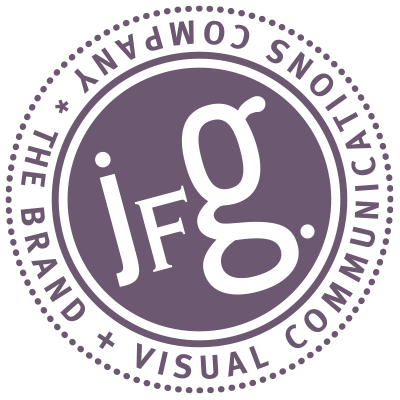Why Every Startup Needs a Pitch Deck Audit, Even if You’re Using AI Tools
Creating a pitch deck is one of the most critical steps in securing investor funding. But even the most polished deck can fall flat if it doesn’t communicate the right message, in the right way, to the right audience. That’s why a pitch deck audit is not a luxury; it’s a necessity.
What is a Pitch Deck Audit?
A pitch deck audit is a strategic review of your investor presentation. It examines key areas like:
- Clarity of Story and Messaging: Are you clearly communicating what you do and why it matters?
- Investor Alignment: Does the deck address what investors actually want to see—traction, market opportunity, and a return on investment?
- Design and Visual Hierarchy: Is the deck visually engaging, or is poor design getting in the way of your message?
- Slide Structure and Flow: Are you building a compelling narrative that leads to a “yes”?
An audit process is designed to catch what founders often miss: blind spots, filler slides, weak hooks, or even a strong idea buried under jargon or clutter. It is essential to do an audit to ensure that you speak directly to your audience and that your message and ask are clear.
The rise of AI: helpful, but not a replacement
In recent years, tools like PitchDeck AI, Beautiful.ai, and Tome have made it easier than ever to create pitch decks quickly. These platforms can be a great starting point. They help with formatting, slide layout and establishing a basic storytelling structure but most importantly, they can speed up the initial creation process, giving founders a head start when building their presentations.
But here’s the catch: AI doesn’t understand your unique business or investor audience the way a strategist—or an investor—does. Most AI-generated decks are generic. They follow predictable patterns, often lack originality, and don’t reflect the nuance, traction, or vision that makes your startup fundable.
Founders increasingly turn to AI tools to create their decks, yet they often share the same weakness: while the format is there, the strategy usually isn’t. Here’s what is typically found:
What AI gets right:
- Clean, well-organized slides
- A basic investor pitch framework
- Faster output when you’re short on time
What AI gets wrong:
- Misplaced emphasis on the wrong metrics
- Generic copy that lacks conviction
- Designs that don’t reflect your brand
- No insight into investor psychology or deal context
The edge you can’t get from AI: strategic, human insight
AI tools can help you build a basic deck—but they can’t tell you if your story actually resonates with investors, if your structure makes sense for your stage, or if your messaging builds confidence. That requires human insight, strategic thinking, and real-world experience. That’s exactly what a pitch deck audit delivers.
When you work with me, you’re not just getting surface-level edits or generic suggestions—you’re getting a comprehensive, expert review of your deck from someone who’s helped startups raise real funding.
Here’s what you can expect from your audit:
- A slide-by-slide review of your current deck with feedback on structure, flow, clarity, storytelling, and investor appeal
- A 10–15 minute Loom video walking you through exactly what’s working, what’s not, and how to improve it
- A summary report outlining your biggest opportunities and any red flags to address
- A customized ideal slide flow based on your startup’s stage, industry, and fundraising goals
This process goes far beyond what AI or templates can do. It’s designed to sharpen your message, strengthen your positioning, and give you the confidence that your deck tells the right story to the right people.
Whether you’re getting ready to share your deck or just want a fresh pair of expert eyes, a professional audit gives you thoughtful, strategic feedback that AI tools simply can’t provide.
Final thoughts
AI can help you build faster, but only strategy can make you pitch smarter. Before you submit your pitch deck or meet with investors, pause to have it professionally audited. A thorough audit can differentiate between a missed opportunity and securing funding. To learn more about how I can help you create a compelling pitch deck that reflects your vision and positions your startup for investor interest, schedule a complimentary 30-minute consultation today, and ask me how a pitch deck audit can help you sharpen your story and elevate your chances of receiving the funding you seek.
Brand Strategy Is the Key to Long-Term Success for Expertise-Based Entrepreneurs
Expertise-based entrepreneurs must differentiate themselves from the competition and establish a solid reputation to attract and retain clients. While it’s essential to focus on serving your clients, it’s easy to do so at the expense of your long-term goals. Whether you’re just starting, expanding your business, or looking to rebrand, a brand strategy can help you achieve your goals and build a lasting foundation for success.
Why should you invest in brand strategy?
A brand strategy is a comprehensive plan that outlines how your company will position itself in the market and differentiate itself from competitors. It identifies your company’s unique value proposition, audience, messaging, visual identity, and personality. An effective brand strategy must align with your company’s business goals and objectives and guide your marketing and communication efforts. Investing in brand strategy helps you achieve four goals:
- Differentiates you from the competition. Your company needs to differentiate itself to stand out and attract customers. A well-defined brand strategy can help you identify and capitalize on your unique strengths and attributes and position your company as the best solution for your audience.
- Helps you show up consistently and build a solid reputation. According to the State of Brand Consistency Report, branding consistency can increase revenue by 20%. By investing in a brand strategy, you can gain the attention and trust of the people you serve. By communicating your story consistently across all touchpoints, including your website, social media, marketing materials, and interactions, your marketing and communication efforts will reinforce your company’s values and message.
- Builds customer loyalty. A well-defined brand creates an emotional connection with your audience that leads to increased loyalty and advocacy. By investing in a brand strategy, you can establish a brand that resonates with your audience and builds trust and loyalty, leading to repeat business and positive word-of-mouth. A well-defined brand attracts customers, colleagues, and partners who share your values and beliefs.
- Creates long-term value for your business. A strong brand can provide lasting value for your company, helping you attract and retain customers, increase brand awareness, and drive revenue growth. Investing in a brand strategy builds a foundation for long-term success and sustainable growth.
A strong brand requires you to identify your audience’s unique needs and wants and understand their challenges. It requires you to clearly define how you help them overcome those challenges and how your approach and solution differentiate you from the competition.
When should you invest in brand strategy?
Expertise-based businesses should invest in a brand strategy to differentiate themselves from competitors, establish a reputation as a trusted authority in their field, and attract new clients. A strong brand can communicate the unique value proposition of your business and make it stand out in a crowded market. There are three times when investing in a brand strategy is particularly valuable:
- New businesses. A brand strategy is essential for establishing a strong foundation and setting the stage for growth. By investing in a brand strategy early on, you can define your unique value proposition and establish a clear and consistent brand identity.
- Growth initiatives. If your company wants to expand into new markets or launch new products or services, a brand strategy ensures that the new offerings align with your existing brand and resonate with your audience.
- Rebranding. A brand strategy will help ensure your new brand aligns with your business objectives and resonates with your audience. It also ensures that the messaging and visual identity reflects your company’s values and unique strengths.
Whether you’re just starting, expanding your offerings, or looking to rebrand, a well-crafted brand strategy can save you time and money by keeping you focused on your business goals and audience.
How do you know it’s time to invest in brand strategy?
As an expertise-based entrepreneur, you’ve poured your heart and soul into your business. You know you have valuable skills and knowledge to offer, but something isn’t quite working, and you’re getting increasingly frustrated. If any of that feels familiar, you aren’t alone. Below are several common scenarios that indicate it’s time to invest in brand strategy:
- You’re doing everything you’re supposed to but you aren’t reaching the right audience.
- Your marketing efforts are reaching the right audience but aren’t getting results.
- Your lead product or service is not selling as well as it once did, and you don’t know why.
- You feel like nobody gets what you do, and they introduce you to the wrong people.
- You’ve added products or services that don’t seem aligned with the rest of your work.
- You want to have confidence in your marketing collateral and course materials.
- You’ve been DIYing it and want a more polished image representing you and your company.
Investing in a brand strategy can help you address these challenges and create a strong foundation for the success of your business. By developing a clear and consistent brand identity, you can differentiate yourself from competitors, build customer loyalty, and create lasting value for your business.
To learn more about how I can help you establish a cohesive brand that reflects your personality and showcases your unique genius, schedule a complimentary 30-minute consultation today and ask me how a brand sprint can help you take your business to the next level.
Creating a Truly Persuasive Investor Pitch Deck
Many founders make common, and costly, mistakes when building investor pitch decks. Your product, your vision, and your growth potential, all matter. But if you don’t first understand the investors you’re pitching to, even the most polished deck will fall flat.
Too often, founders lead with features, forecasts, and content heavy slides before establishing why any of it matters to the investor. Investors aren’t just evaluating what you’ve built—they’re assessing whether it fits their worldview, priorities, and portfolio strategy.
In The Necessary Art of Persuasion, Jay Conger reminds us that true persuasion doesn’t start with data or dazzling slides. It starts with listening. According to Conger, four key elements are essential to telling a persuasive pitch deck story:
- Establish credibility.
- Frame goals around the investor’s interests.
- Reinforce your position with compelling evidence.
- Connect through empathy and storytelling.
Let’s break each of these down.
1. Establishing Credibility
Before investors consider your market opportunity or business model, they must believe in you. Conger emphasizes that persuasion starts with trust, and trust is built on credibility.
To establish credibility:
- Demonstrate deep understanding of your market and customers.
- Speak candidly about risks and how you’re managing them.
- Present confidently, without exaggeration or hype.
Nancy Duarte, in Resonate, underscores the importance of storytelling. In your pitch, that means framing the problem clearly, showing how your solution changes the game, and proving why you’re the right team to lead the charge. But storytelling only works when your audience sees you as credible.
Credibility also lowers resistance. Investors have seen flashy decks and inflated projections before. What stands out is a founder who knows their numbers, anticipates questions, and speaks with clarity and humility. In the end, investors invest in people. Use your pitch to show expertise, build trust, and demonstrate you’re the founder worth betting on.
2. Framing Goals Around Investor Interests
It’s not enough to say what you want; you have to show why it matters to them. Conger emphasizes that persuasion hinges on aligning your goals with others’ interests. Duarte similarly notes that powerful communication bridges the gap between “what is” and “what could be”—a future investors can see themselves in.
For example, don’t just say, “We’re raising $2M to grow our team.” Reframe it as, “We’re raising $2M to scale in a proven market, targeting a 10x return.” That subtle shift positions your ask as their opportunity.
By combining Conger’s principle of alignment with Duarte’s storytelling framework, your pitch becomes more than informative, it becomes irresistible.
3. Presenting Compelling Evidence
Passion and vision may open the door, but evidence is what moves investors through it. Compelling evidence transforms your big idea into a credible investment opportunity. As Conger notes, persuasion is incomplete without substance. Without proof, your pitch sounds like speculation. As Duarte puts it, facts alone don’t persuade, but when woven into a story, they create belief and momentum.
In a pitch deck, evidence might include:
- Traction metrics that demonstrate customer demand.
- Pilot results or partnerships that validate your solution.
- Competitive data that shows your differentiation.
- Financial projections grounded in reality.
- Testimonials or case studies that bring your story to life.
This kind of proof serves two key functions:
- It reduces perceived risk, critical for any investment decision.
- It strengthens your story, facts become more powerful when they support a compelling narrative.
Ultimately, investors are asking: “Why should I believe this will work?” It’s your job to answer that with data, traction, and logic that back up your vision.
4. Connecting Through Empathy and Storytelling
Before building your deck, start by truly understanding your audience. Here’s a simple empathy exercise to guide your narrative:
- List three things your audience cares most about.
- List three questions or concerns they’re likely to have.
- Identify how your solution addresses each one.
By viewing into your investors’ lens, you’ll shape a pitch that speaks to what they value, and what they fear. Duarte emphasizes ruthless clarity: cut anything that doesn’t directly contribute to the investor’s understanding or decision-making. This applies to both your words and your visuals.
Strong design further amplifies your message, use it to simplify complex ideas and evoke emotional resonance. Done right, your story won’t just be heard, it’ll be felt.
Conclusion
The better you understand your audience’s goals, concerns, and values, the more tailored, and persuasive, your pitch will be. Every slide should reflect a thoughtful blend of strategy, empathy, and storytelling. Remember: the best pitch decks aren’t about you. The best pitches are about the investor, and how your solution solves a problem that matters to them. When you lead with credibility, frame around their interests, provide compelling evidence, and connect through storytelling, your deck becomes far more than a presentation. It becomes a reason to believe, and a reason to invest.
Balancing Strategy and Creativity: The Art of Visual Communication
The Innovabiz Podcast
Hosted by Dr. Jürgen Strauss of InnovaBIz
Our guest in this episode is Jillfrances Gray, founder and creative director of JFG Visual Communications. Jillfrances’s journey from opera singer to visual storyteller is a testament to her creativity, adaptability, and passion for helping startups build impactful brands. In this conversation, she shares her insights on balancing strategy and creativity, the power of storytelling, and how AI is shaping the future of design.
Key points discussed include:
- The importance of strategy in design: Strategy is the foundation for creating visuals that resonate and connect emotionally with audiences.
- The role of storytelling in branding: Storytelling builds trust and emotional connections, making brands memorable and impactful.
- Embracing AI as a creative tool: AI enhances creativity and efficiency but should complement, not replace, human storytelling and authenticity.
Where to listen:
Boost Your Visual Communication
The Company Saviors Podcast
Hosted by Mads Pleman Rossau & Michael Sackmary
Discover the transformative power of visual communication in branding with entrepreneur Jillfrances Gray. This podcast unpacks the science behind how visuals capture attention and drive engagement, offering actionable insights to create a brand that resonates and endures. Learn essential strategies for impactful branding, brand strategy, and presentations, whether you’re building from scratch or refining your approach. Tune in to elevate your visual communication and achieve business success.
Where to listen:
The Big Impact of Visual Communications
The Sweet Spot Podcast
Hosted by Barb Davids of Compass Digital Strategies
In this podcast episode, Barb Davids interviews Jillfrances Gray, Principal of JFG Visual Communications, about the power of strong visual design. Jillfrances explains how visual communication enhances brand recognition and user engagement, sharing strategies for building a unique digital identity. She discusses the pros and cons of using AI and stock photography, offers tips for maintaining consistency in visual branding, and highlights the creativity and problem-solving involved in the process. Jillfrances also shares practical advice for small businesses looking to implement effective visual branding strategies.
Where to listen:
You Don’t Need a Plan. You Need a Strategy.
Before you start creating another annual plan for your business, make sure you have a solid strategy. A plan is not a strategy. It is merely a list of activities you plan to undertake. It cannot help you position your business to succeed.
According to Roger Martin, the former dean of the Rotman School of Management at the University of Toronto and one of the world’s leading thinkers on strategy, most businesses excel at planning but fail to engage in strategy.
Planning feels productive. There’s something comforting about having a plan in place as you start a new year. That list of achievable tasks that are entirely within your control gives you a sense of agency and confidence in the future of your business. It tells you what to do and when to do it, so you never have to guess. Your plan gives you a list of tasks to complete. Each time you check an item off the list, you experience the satisfaction that comes with making progress.
But Planning Without Strategy is Meaningless.
Plans are based on SMART goals, goals that are specific, measurable, achievable, relevant, and time-bound. They are typically organized by initiative and include a budget. But a strategy is based on a theory that may or may not be true. And for many people, that feels risky.
In a video released by Harvard Business Review, Roger Martin defines a strategy as “an integrative set of choices that positions you on a playing field of your choice in a way that you win.” In other words, a strategy sets forth a coherent and realistic theory about which playing field you should be on and how you will serve the people on that field better than anyone else.
Your strategy specifies an outcome you wish to achieve. Achieving that outcome depends on the behavior of the people you serve — if enough of them purchase your product or service, you will achieve the specified outcome. If the people you serve don’t buy your product or service, you won’t achieve the specified outcome.
Strategy thus depends upon the behavior of other people; it depends on something entirely outside of your control. Strategy requires you to acknowledge the fact that the people you serve are the ones who decide whether the products and services you provide are worth buying. But unlike planning, strategy specifies a theory about how you can achieve the outcome you seek. And as you learn more about the people you serve, you can refine your strategy.
Related Article: Three Strategies Every Successful Business Needs
Strategy Translates Theory into Action to Achieve an Outcome.
A great strategy starts with a theory and specifies an outcome. It then translates that theory into actions designed to help you achieve that outcome. Strategy is about positioning. If your theory is right about how the people you serve will react to the products and services you provide, you will be in a great position to create a thriving business. If your theory is wrong, you can learn from the experience and try again.
Every strategy must answer basic questions about who you serve, how you serve them, the problem you solve, and the value you offer. Answering these questions requires you to make assumptions about yourself, the industry, your competition, and the people you serve. Clearly identifying the assumptions underlying your strategy will help you identify where you went wrong and allow you to refine your strategy.
Related Article: Why a Strong Brand Identity is Crucial for Fast-Growth Companies
Strategy is Branding. Branding is Strategy.
Strategy helps you achieve a specific outcome. It positions you to succeed in business by identifying your market, the people you serve, and how you serve them. Branding takes your theory about the people you serve and how they will react to the products and services you provide and makes it tangible so you can differentiate yourself in the marketplace and stand out from the competition.
As a brand strategist and designer, I can help you create a strategy and powerful brand story that reaches your audience in a way that is both relevant and resonant. We will dive deep into your business to understand what you do and who you serve, how the people you serve feel when they work with you, and the characteristics and values that define your work.To learn more about how I can help position you and your business to thrive in the coming year, schedule a complimentary 30-minute consultation today.
Want to Make the Most of Your Next Speaking Engagement?
Think About Your Brand First.
Conference season is a time to learn new things, network with other professionals, and gain valuable connections and insights. If you are a speaker, it’s also a time to showcase your knowledge and expertise.
While an engaging presentation allows you to deliver your message effectively and makes an impression on the attendees and conference organizers, you certainly need a lot more to make a lasting impression. If you are speaking at conferences to generate leads for your business, your presentation is just one piece of a much bigger initiative. So, I wonder, are you curious about how your brand comes into play?
Why Does Every Speaker Need a Strong Brand?
Whether you are a seasoned conference speaker or new to the circuit, a well-defined brand can help you connect with your audience and leave a lasting impression long after you’ve left the stage. Here is why:
When you have a strong brand, you are helping to shape people’s perceptions of you and your business. A well-defined strategy guides every experience your customers may have with you. A well-defined strategy embodies your business directives and the messaging and visual tools you will need to get there.
When others can easily and accurately describe what you do, how you do it, and whom you do it for, you know your brand is working. To make it easier for people to answer who you are, you need to project a consistent professional image and have a clearly defined message you wish to share with the world.
When you are clear about your brand, it makes it easier for event planners and prospective clients to understand what you do and why they should care. Having that strategic foundation makes you more credible as a speaker and visible to potential clients. It helps you build a reputation as an expert and makes it easier to secure better speaking opportunities and command higher fees.
By working with a brand strategist, you will not only develop a strong brand, but you will be able to maintain that brand across various communication channels and from one speaking engagement to the next. You’ll also have a thoughtful partner to brainstorm ideas to use at each event to help you stand out by creating a unique and memorable experience for your audience.
When you go through my brand strategy workshop, you’ll learn exactly who is in your audience, what they are struggling with right now, and how to speak to them, so they know, without a doubt, that you are the person who can help solve their problem.
If you are consistent with your professional image and a clearly defined voice for your message and visual assets that are uniquely you, not only will you be memorable, you will be sought-after.
Make the Most of Your Next Event. Here are a Few Ideas.
If you want to make the most of your next speaking engagement, gain more visibility, and connect with the right people, you need a plan of action to implement before, during, and after the conference. Here are a few suggestions:
In the weeks leading up to the conference:
- Promote your talk on social media, in your email signature, website, and email newsletter. Ensure the graphics are engaging, eye-catching, and consistent with your brand. Share the relevant details about the event, including the dates and city.
- Polish your presentation and ensure it reflects your brand and that the visuals enhance your message. Images and graphics need to be clear and easy to see. Charts, graphs, and infographics need to be easy to understand. And the fonts you use must be easy for people to read — even if they’re sitting at the back of the room.
- Determine how you will connect with the people who attend your talk. Prepare a branded information packet with your business card, an evaluation form, and a capabilities handout. Maybe include a branded pen and a small notebook.
- Need to be paper-free? Go 100% digital by creating a QR code that leads directly to a multi-functional landing page that can help promote and announce before the event. After the event, the same landing page becomes a place your audience visits to download the presentation slides, complete an evaluation to help improve future talks, post your upcoming event dates, and invite them to sign up for your monthly newsletter.
At the conference:
- If permitted, place branded information packets on every chair in the room before your talk. Otherwise, hand out the branded materials to people as they enter or leave the conference room. Please point out the materials during your speech, and don’t forget to ask them to complete the evaluation form.
- Need to be paper-free? Highlight the QR code to direct your audience to your custom landing page at the beginning and end of your presentation – remind them of the benefits – monthly newsletter, presentation slides, upcoming events, a free downloadable or valuable takeaways from the event.
- Consider hosting a giveaway from the stage by asking the audience questions and giving something to those who step up to the microphone to ask you a question. You might provide people with a copy of your book (or a book you found particularly insightful) or branded swag such as a portable charger, water bottle, or insulated mug.
After the conference ends:
- Review the completed evaluation forms and information attendees submitted to your website. Capture people’s contact information and any helpful suggestions.
- Follow up with everyone you met at the conference, whether they attended your talk or not. A personal email is sufficient, but branded thank you cards help you stand out!
Ready to Take Your Speaking to the Next Level?
You’ve invested time, energy, and effort in becoming a speaker. But, whether you are a paid speaker or use speaking to increase your visibility and get more clients, you need a strong brand built on a solid brand strategy before you can use speaking as an effective tool for business growth. As a brand strategist and designer, I can help you get the most out of every speaking engagement by ensuring you stand out above the crowd and make a lasting impression.
To learn more about how I can help you take your speaking to the next level and get actual results for your business, schedule a complimentary 30-minute consultation today.
Are You Connecting With Your Audience?
To build a thriving business, you need to connect with your audience emotionally and rationally. Good design can evoke emotions and help present complicated information in a way that makes it easy to understand and evaluate.
According to research completed by Antonio Damasio, a neuroscientist and the founder of the Brain and Creativity Institute at the University of Southern California, emotions play a central role in social cognition and decision making. Our emotions drive our behavior, and it is impossible to make a decision without relying on our emotions.
Of course, that doesn’t mean appeals to logic and rational thought aren’t necessary. They are. But how we interpret facts and appeals to reason is based on our emotions, even when we use logic to justify our decisions.
Appealing to logic helps your audience see the problem and solution you offer clearly.
Your product or service needs to solve your clients’ problems. When communicating with prospective clients, you must demonstrate that you understand the problem clearly and can help them solve it. Prove to your clients that you have a methodology, approach, product, or service that will get them the results they seek.
When you appeal to logic, you help prospective clients make an informed decision by showing them that you understand what they need, their concerns, and the steps they have taken so far to solve the problem. That helps you build trust, paving the way for an emotional connection.
Appealing to emotions helps your audience trust that you are the one who can help them solve the problem.
Your product or service also needs to eliminate the stress your customers feel. When communicating with your prospective clients, you need to demonstrate that you not only understand the problem but the emotions surrounding that problem. Every problem has an emotional undercurrent or causes stress that your clients feel deeply. Showing your clients that you understand what they are going through deepens their connection to you and makes it easier to help them solve the problem they are facing.
To connect with your clients, you have to be honest and transparent. You have to show them that you understand and care about what they are going through. Clients who feel emotionally connected to you and your brand are likelier to stay loyal and refer others to you. They are also much more likely to resonate with your marketing.
To connect with your audience, you need to understand who they are and what motivates them.
To engage and connect with your audience, you need to know them intimately. You need to understand what they care about and where they spend their time — online and off. You need to understand their goals, aspirations, and motivations. You need to know what they are thinking about and talking about and where they are having these conversations.
Interview-based customer personas help you understand exactly who your clients are and what they care about so you can connect with them rationally and emotionally. Developing personas can help you understand what your clients want and need. It can help you empathize with your clients and understand the problem deeper so you can guide them towards a solution that works. When you know who your clients are, you can shape your brand, messaging, and voice to connect with them in a way that resonates with them and inspires them to take action.
Good design helps you connect with your audience.
Visual communications and graphic design are crucial tools to help you connect with your customers. Good design can help you communicate your brand, values, and message effectively. As a result, prospective clients can relate to you and thus trust you more quickly if they resonate with your brand.
How your brand shows up is crucial to creating lasting relationships with prospective partners and clients. Your brand must be unique, consistent, and on-point. Your message has to center your clients and speak directly to them. It must show prospective clients that you understand them, what they are going through, and that you can help get them where they want to go.
You can’t effectively connect with your audience if you look like everyone else. So you have to stand out from the competition and resonate with your audience. You must be willing to show your prospective clients who you are, so that they trust you enough to let you help them achieve their goals. And that means you have to show up in a way that is uniquely you.
We should talk if you want to deepen your connection to your audience. As a brand strategist and designer with expertise in visual communications, I can help you connect with your audience in ways that are powerful, effective, and uniquely you. To see if we’re a good fit, schedule a 30-minute consultation.
Rebranding? Consider a Brand Analysis First
Rebranding doesn’t have to be daunting, expensive, or feel like you are starting over, not if you consider a brand analysis first.
As an entrepreneur, you are constantly learning, stretching, and growing. Evolution is a natural progression. Yet, as your business gains traction, you start to realize whom you do your best work for, who isn’t quite the right fit, and which marketing tactics are thriving and which are not. Maybe the brand identity you thought would last is starting to look dated and not setting the right tone of what you represent. Perhaps your messaging isn’t hitting the mark with the ideal customers you have come to know.
Your brand is the one thing that can set you apart from your competition, but with constant change, audience refinement, and inconsistent esthetics, how do you know if the brand you started with is still unique or powerful enough to cut through the noise and speak to your ideal customer? It might be time to review your brand so you can bring it back into alignment with your business.
Why conduct a brand analysis before rebranding?
A brand analysis is a process that identifies and assesses the key components that make up your brand: positioning, messaging, personas, esthetics, and more. It gives you a holistic view of how your company presents itself to the world. An effective brand strategy is your business foundation.
Yet, when your marketing is no longer as effective as it once was or is not working, it’s time to consider what needs to happen to get back on track.
When rebranding, you don’t want to start from scratch because you’ve already invested time, money, and effort into building your brand. You want to create a brand strategy that builds upon your brand’s strengths. A brand analysis lets you evaluate your current brand to identify your assets and determine areas of strength, weakness, and gaps that either already work well or need to be updated so they speak to your audience more effectively. Keep what works; fix or remove what doesn’t.
The brand analysis revises and enhances your brand strategy.
A brand analysis gives you a clear sense of direction and purpose to what to fix to move forward. Uncovering the gaps and challenges is the only way to see what you may need to rethink and adjust. A few adjustments to the overall approach will align your message and image with your brand strategy.
For example, if your messaging has lost its focus, you might need to create new personas, try a different angle with your position in the marketing place, or reevaluate who your competition is. In addition, you may find that an updated style guide, adjustments to your voice on social channels, or redefined service offerings ensure that your message is relevant and resonates with your audience. By refocusing your brand, you will ensure that every communication you send out into the world will be evident that it comes from your brand.
Rebranding doesn’t have to be overwhelming.
The rebranding process can feel daunting, but you don’t have to go through it alone. When done well, a brand analysis provides actionable insights that will help you develop a strong brand and marketing strategy. In addition, by conducting a brand analysis before engaging in any form of brand strategy, you’ll ensure that your rebranding efforts are successful and meaningful. To learn more about the rebranding process, how a brand analysis can save you time and money, or how a brand strategy can help you set the foundation for your brand, schedule a complimentary 30-minute consultation today.











